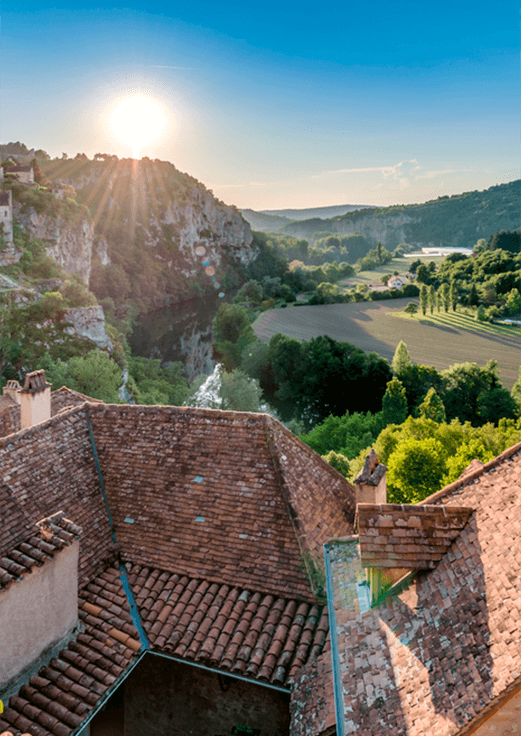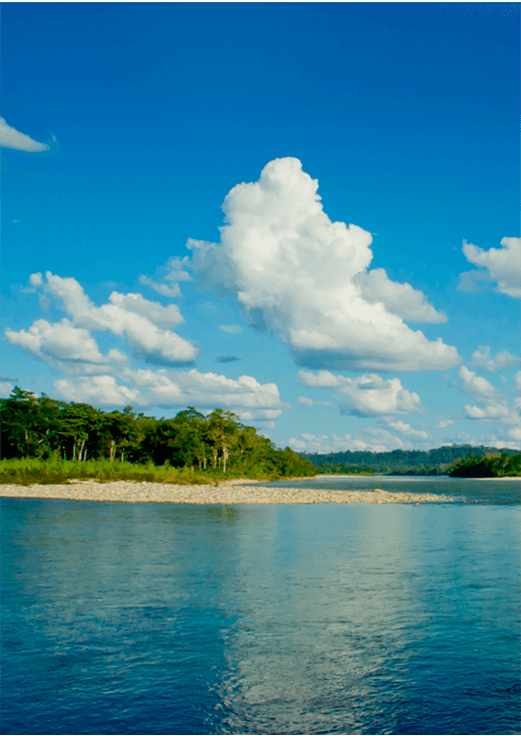
Geography
Peru occupies the west central area of South America, on the shores of the Pacific Ocean. It is the third largest country on the continent, covering 1,285,215.6 square kilometers (496,211.51 miles squared), a surface greater than the combined territories of Spain, France and Germany. Peru is divided into three geographic regions:
-
Coast (12%)
A warm climate along the coastline that includes superb natural beaches, mysterious deserts, fertile river valleys and exotic dry woodlands. Key cities located in this region include Lima (the central located capital), Trujillo, Chiclayo and Piura to the north, and Pisco, Chincha, Ica and Tacna to the south.
A lot of manufacturing activities are located in this region, some mining and most of the agribusiness, having this region a natural green house. Textile industry based in cotton is very important too and also tourism and gastronomy.
-
Highlands (28%)
A region of varied terrain and temperate climate, dominated by the snow-capped peaks of the Andes rising above 6,000 meters above sea level (masl), the highest of which is Mount Huascaran, at 6,768 masl (22,206 ft). It includes deep canyons such as the Colca and Cotahuasi, the two deepest on the planet; and high plains like the plateau of Collao, on the shores of the world’s highest navigable lake, Titicaca, at 3,810 masl (12,500 ft).
The main cities in the region are Arequipa, Huancayo, Cajamarca, Cusco, Puno and Juliaca. Key activities are tourism based on archaeological sites from the Incas and pre-Inca cultures. The region is also home to a competitive mining industry has been developed in the Andes mountains. Many agricultural and livestock activities strive in the region, particularly quinoa production and Alpaca breeding.
-
Jungle or Amazonia (60%)
A region of tropical climate, lush vegetation, and abundant fauna that is part of one of the planet’s largest natural areas, the Amazon jungle. It is here that the confluence of the Maranon and Ucayali rivers forms the Amazon River, the largest in the world.
Key cities are Iquitos, Pucallpa and Tarapoto. Tourism is very important with several natural parks, and agricultural, aquaculture and forestry activities are also key, including research on new species and better ways for conservancy of natural resources. Also deposits of oil and gas have been discovered in this region.
Politically Peru is organized into 24 states or “departamentos” (Amazonas, Ancash, Apurimac, Arequipa, Ayachuco, Cajamarca, Cusco, Huancavelica, Huanuco, Ica, Junin, La Libertad, Lambayeque, Lima-Provinces, Loret, Madre de Dios, Moqueguea, Pasco, Piura, Puno, San Martin, Tacna, Tumbes, and Ucayali), besides Callao Constitutional Province and the capital Lima Province.
Climate
Temperatures and atmospheric cycles vary from one region to another. Coast: There are two clearly-defined seasons on the coast: summer (December-march), when average temperatures can reach 27 degrees C (80 degrees F); and winter (April-November), which is very damp and chilly, with temperatures falling to 12 degrees C (53 F) in the middle and south part of the country. Although it rarely rains on the coast, mist and drizzle are common during the winter. The far north coast enjoys sunshine all year round, with temperatures reaching 35 C (95 F) in the summer. There you can get torrential rains during the El Nino phenomenon.
-
Highlands
The climate is dry and temperate, with two clearly defined seasons: the dry season (April-October), with sunny days, very cold nights, and scant rainfall (the ideal time to visit the Andes), and the rainy season (December-March). There is a sharp contrast in temperature between sun and shade, and temperatures can often vary widely during the same day, from 20C (68F) to 2C (35 F). In the higher altitudes of the Andes mountain range, the temperature can easily fall below 0C.
-
Jungle
The climate is tropical and humid. There are two well-defined seasons: the summer or dry season (April to October) with sunny days and temperatures above 30C (86 F), and the rainy season (November-March) with frequent showers and high river levels.

Demographic Information
Peru has approximately 33 million inhabitants in 2020 and its population grows by 1.7% a year including immigration. The coast shelters 56% of the total population, the highlands 30% and the jungle 14%. The population is mostly mixed, urban, and speaks Spanish. Only 10.1% of the population is over 60 years old.
Peru is home to a variety of different ethnic minority cultural groups such as Andean populations, divided in the Quechua and Aymara language families, and Amazon populations divided in 14 language families and 42 ethnic groups. Those groups are generally well adapted to Peruvian society and almost all of them speak Spanish as well.

